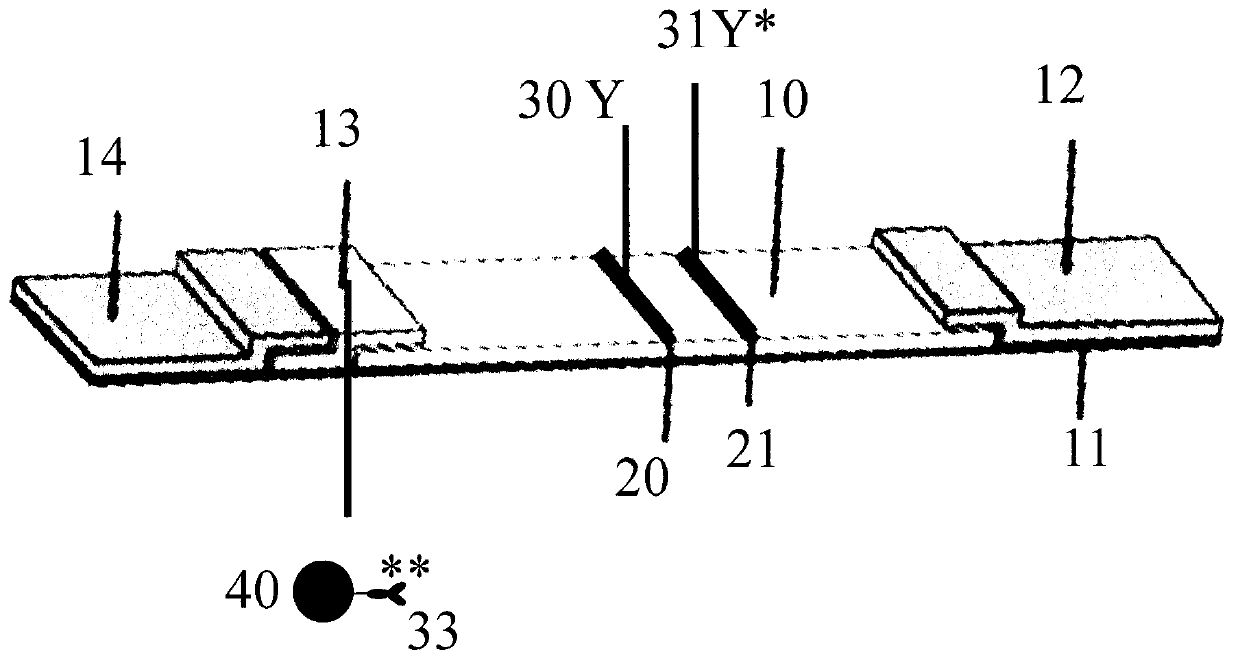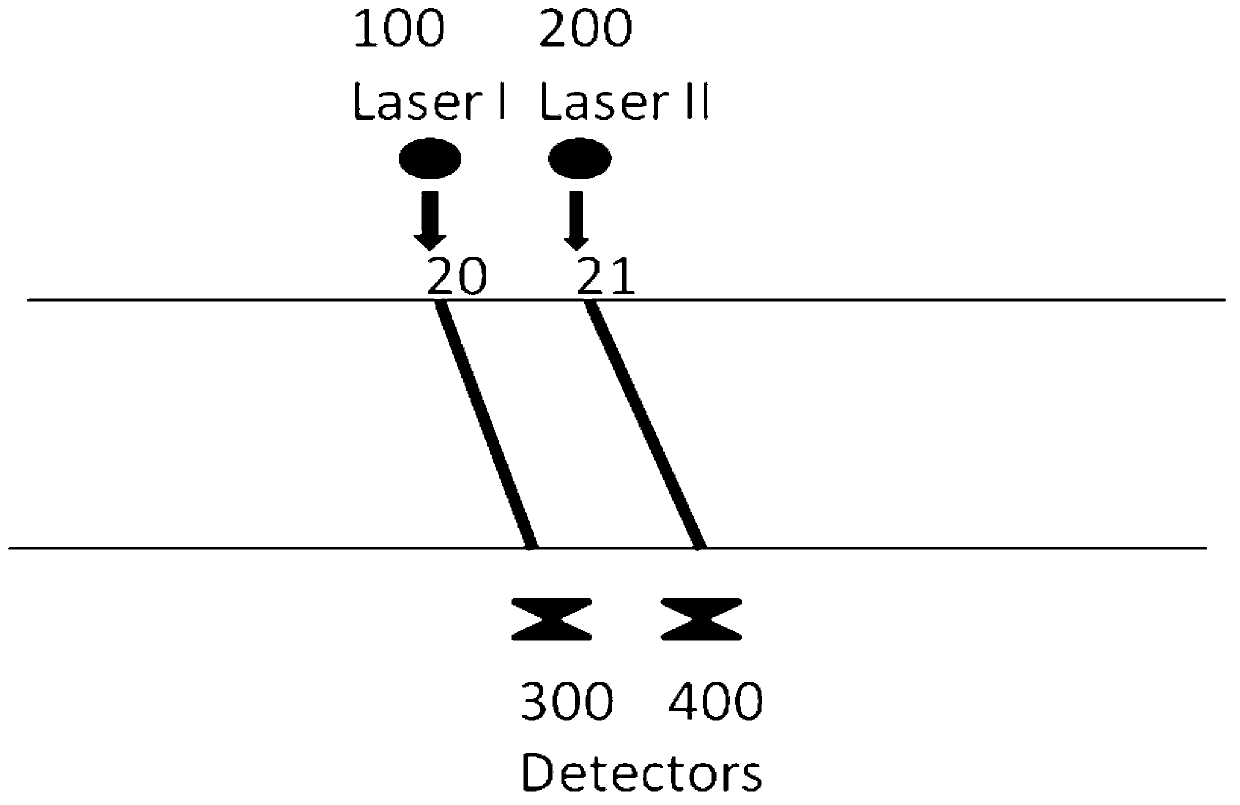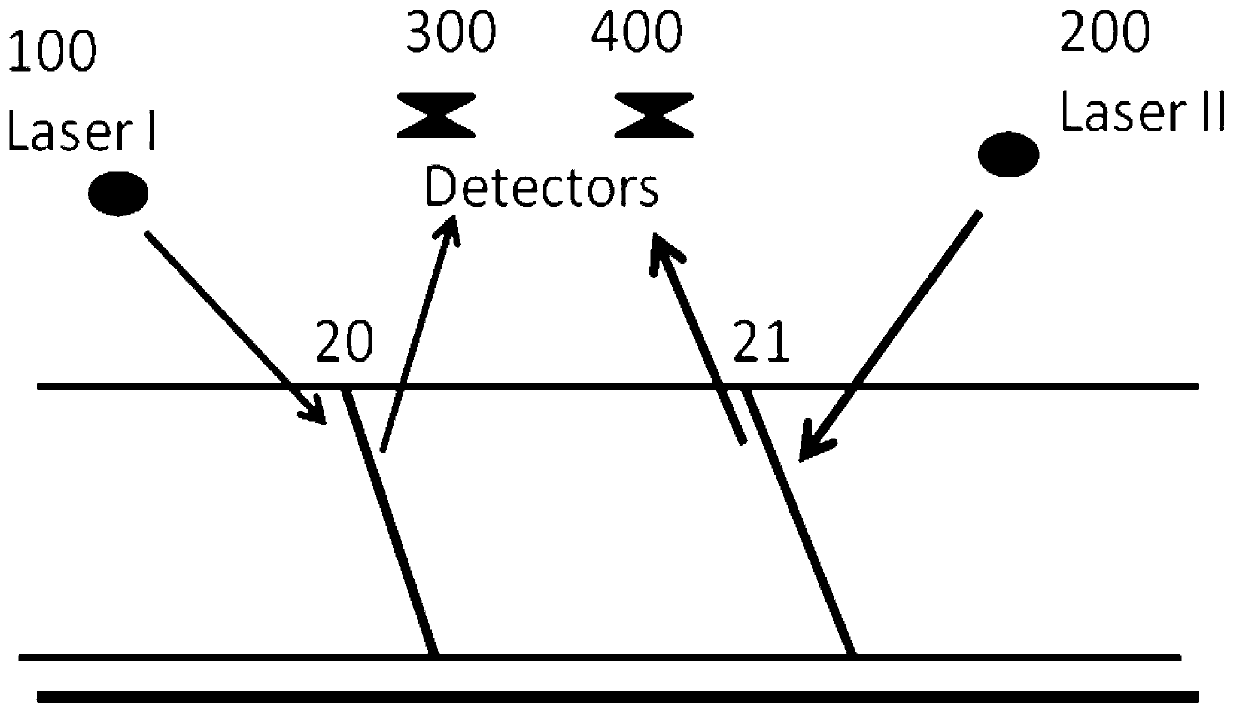Laterally-flowing immunoassay method using time resolution up-converting phosphor technology
A technology of lateral flow chromatography and measuring device, which is applied in the detection field and can solve problems such as reducing the accuracy of results
- Summary
- Abstract
- Description
- Claims
- Application Information
AI Technical Summary
Problems solved by technology
Method used
Image
Examples
Embodiment 1
[0082] Example 1: Preparation of up-conversion luminescent probes
[0083] Add a certain amount of ethanol to an appropriate amount (200 μl) of an aqueous solution of carboxylic acid functionalized polymethacrylic acid latex particles PP02N (0.33 μm in diameter) under stirring, to reach 65% of the total amount of solvent. An appropriate amount (eg, 1% by weight of the latex particles) of vinyl chloride containing the proprietary europium chelate (eg, 1% by weight of the total solvent) is slowly added to the particle suspension with stirring. The mixture was stirred for half an hour. An appropriate amount of water (eg three times the total volume of the initial solvent) is then slowly added to the stirred mixture over a certain period of time (eg 2 hours). After the addition of water was complete, most of the ethanol was removed from the mixture by rotary evaporator. The particles were then washed twice by centrifugation using 90% ethanol. The particles were then washed twic...
Embodiment 2
[0084] Example 2: Ligation of antibodies to upconverting luminescent probes to form conjugate probes
[0085] The carboxylic acid surface groups of the probe prepared in Example 1 were first activated by standard methods using carbodiimide. The transbiotin antibody was mixed with the activated probe for four hours. Probes were washed four times with Hepes buffer and suspended in Hepes buffer containing 10 mg / ml BSA and 0.5% Tween20 for storage.
Embodiment 3
[0086] Example 3: Time-resolved upconversion excitation and emission spectra of the conjugates prepared in Example 2
[0087] Suspend an appropriate amount of the conjugate prepared in Example 2 in water to prepare a particle suspension in cells (for example, a concentration of 10 ng / cell). Time-resolved upconversion excitation and fluorescence spectra were obtained using the following measurement parameters and are displayed in Figure 5 middle. For time-resolved upconversion fluorescence spectroscopy: excitation at 870 nm, sampling window 50 μs, each flash time 100 μs, initial delay 0.01 μs, number of flashes 10 times, number of scans 10 times, fluorescence collection from 500 nm to 800 nm. For time-resolved upconverted excitation spectra: emission at 615 nm, sampling window 50 μs, each flash time 100 μs, initial delay 0.01 μs, number of flashes 10, number of scans 10, excitation collected as Figure 5 Shown from 700nm to 900nm.
PUM
| Property | Measurement | Unit |
|---|---|---|
| particle diameter | aaaaa | aaaaa |
| diameter | aaaaa | aaaaa |
| transmittivity | aaaaa | aaaaa |
Abstract
Description
Claims
Application Information
 Login to View More
Login to View More - R&D
- Intellectual Property
- Life Sciences
- Materials
- Tech Scout
- Unparalleled Data Quality
- Higher Quality Content
- 60% Fewer Hallucinations
Browse by: Latest US Patents, China's latest patents, Technical Efficacy Thesaurus, Application Domain, Technology Topic, Popular Technical Reports.
© 2025 PatSnap. All rights reserved.Legal|Privacy policy|Modern Slavery Act Transparency Statement|Sitemap|About US| Contact US: help@patsnap.com



